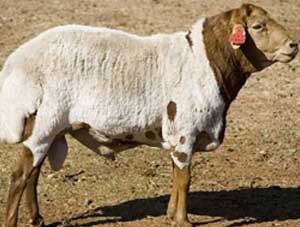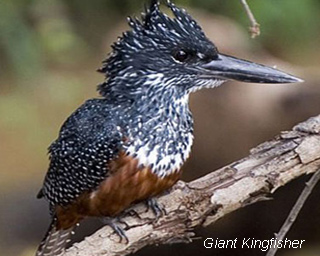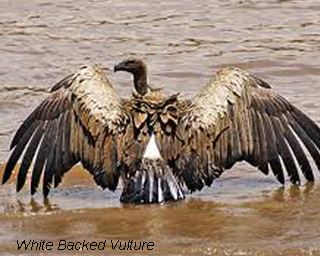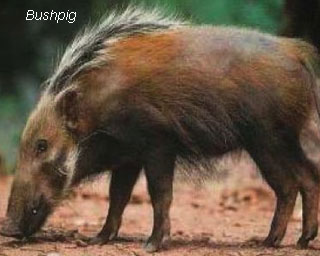A possibility of 340 bird species are waiting to be identified in a truly beautiful setting.
A wide varity of wild animals are waiting to be identified in a truly beautiful setting.
Nguni Cattle
The Nguni cattle breed is indigenous to Southern Africa. A hybrid of indigenous and Indian cattle they were introduced by the black African tribes to Southern Africa from the north of the continent. Through natural selection and environmental interaction the cattle evolved into the hardy breed we know today as the Nguni.
Nguni cattle has long been the mainstay of traditional Zulu culture and with their variously patterned and multicoloured hides everywhere in demand. For hundreds of years, the well-being of the herds and the Zulu people have been so closely connected that cattle have become a part of the people's spiritual and aesthetic lives.
There are two species of cattle in the world: Bos taurus, or European cattle, are the more familiar brown-and-black breeds such as Jersey and Holstein. Bos indicus, on the other hand, are found mainly in India and Africa, and include more unusual creatures such as Zebu and Sanga cattle. They are characterised by their enormous horns and magnificent hides.
The Nguni is a principal form of Sanga cattle, which originated as hybrids of Zebu and humpless cattle in East Africa. Protein analyses have shown that they are a combination of Zebu (Bos indicus) and Bos taurus, the European and indigenous African species.
They are characterized by low cervico-thoracic humps in front of the front legs and they present a variety of horn shapes. They are not large cattle with bulls weighing 500 - 700kg and cows weighing 320 - 440kg. The cattle are heat and light tolerant and have thick pigmented skins covered with fine short hair of different mixtures of colour (black, white, red, brown, cream and dun).
They have long productive lives, cows will produce 10 or more calves calving regularly. They develop excellent resistance to ticks and immunity to tick borne diseases. Disease incidence and mortality are low. They are excellent foragers and will graze and browse on steep slopes and in thick bush alike.
Only in 1932 did the late Professor HH Curzon make an effort to breed true to type Nguni cattle. Another milestone in the recognition of the Nguni breed was the Bonsma report of 1950 on indigenous cattle in South Africa where the appreciation of this adapted breed was highlighted. Final recognition came in 1985 when the Nguni Cattle Breeders Society was accepted as a member of the South African Stud Book and Livestock Improvement Association.
Today there are some 140 registered breeders.
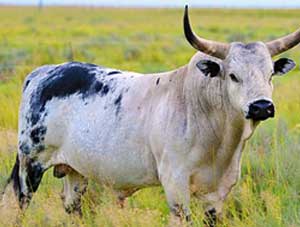
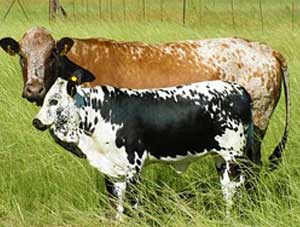
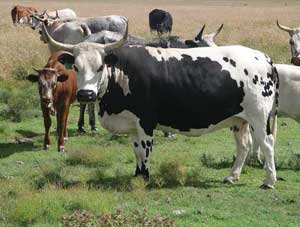
Species: Sheep
Breed Name/Strain : Pedi
Common Name/Synonym: Bapedi
Breed Group Name: Fat-tailed Hair Sheep
Subgroup Information: Nguni
Group Origin:
The ancestral wild stock of both the thin-tailed and the fat-tailed sheep is identical. Fat-tailed sheep made their first appearance in Africa (Egypt) at the beginning of the second millennium. Waves of this sheep type probably entered Africa at various occasions through both the straits of Suez and Bab el Mandeb. From Egypt, the population spread westwards into Libya, Tunisia and eastern Algeria, but did not extend to the south. The group that entered through Bab el Mandeb extended from Ethiopia into the lake region of Uganda, Kenya and Tanzania, but did not enter into Congo. The particular relevance of the fat deposit in the tail to pastoral communities as a source of energy-rich food might have contributed to the extensive replacement of the original thin-tailed sheep by the fat-tailed types. The fat-tailed, hair sheep inhabits the whole of eastern and southern Africa from Ethiopia southwards. They are very variable in tail form and in extent of woolly undercoat. Fat-tailed breeds of sheep with hairy (carpet wool) fleece extend westwards as far as Tunisia, while Algeria and Morocco have breeds with the same hairy fleece, but thin tails (Epstein, 1971; Ryder, 1984).
Breed Origin :
The fat-tailed Pedi sheep arrived in South Africa between 200 and 400 AD with the Bapedi people who migrated southwards into the Northern province of South Africa and settled in the area south of Soutpansberg (Ramsay et al., ND).
Main Location:
Found in the Northern Province of South Africa. A flock of Pedi sheep was established and maintained at the Stellenbosch breeding station in Sekukhuneland in the Northern province and a second flock was established for recording and evaluation purposes on the farm Delftzyl near Roedtan in the Northern province in the mid-1980s (Ramsay et al., n.d.).
Habitat:
Pedi sheep are predominantly grazers although, in common with other indigenous African animal breeds, they are equally happy browsing. Their extremely hardy nature makes them adaptable to all the varied climatic regions of South Africa from the harsh Karoo to the tropical Natal and Eastern Mpumalanga Provinces.
Special Characteristic:
Small framed, naturally polled, fat-tailed sheep with a flat, shallow body and long legs; the fat tail is usually long and straight, although variations in tail shape do occur; coat colour varies from uniform brown through white with a red to brown head, to a variety of black and white patterns; the most common colour is white with a red-brown head, which resulted from selection for this trait in the foundation flock at Stellenbosch (Ramsay et al., n.d.).

